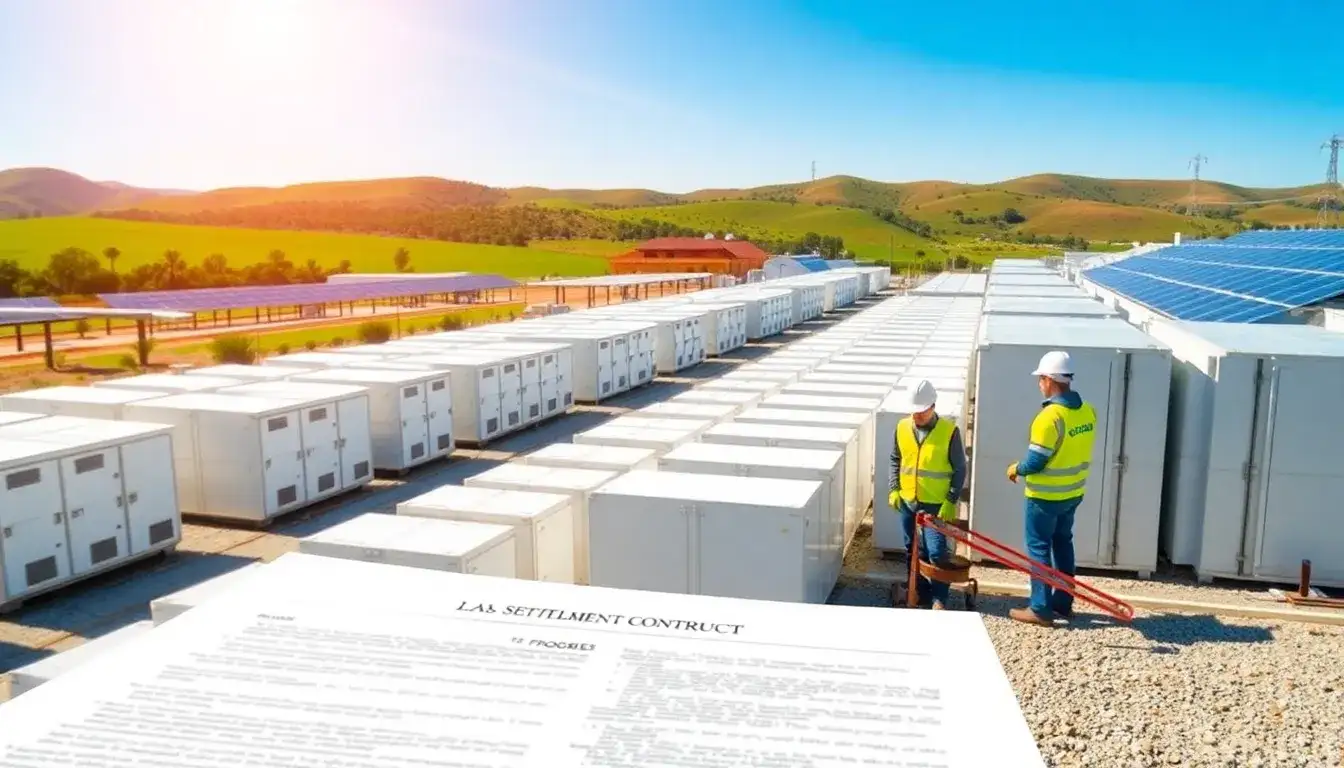Developer Ignis Proposes 362MWh Battery Energy Storage System in California After Legal Settlement
The U.S. development branch of Spain’s Ignis has submitted an application to the California Energy Commission (CEC) to establish a 362MWh battery storage facility in Alameda County, as part of the regulatory body’s Opt-In Certification Programme. The application, dated February 14, 2025, was filed by consultancy firm Jacobs on behalf of Ignis.
This submission comes after months of resolved litigation in New York’s Supreme Court involving Ignis and its former development partner, Salka Energy, who had accused each other of various contractual violations.
Details of the Viracocha Hill Project
The application details Ignis’ Viracocha Hill project, which features a 90.7MW/362MWh Battery Energy Storage System (BESS). This facility will be situated near the planned Sand Hill Wind Repower project in Alameda County’s eastern Altamont Pass area. The BESS will consist of 108 Tesla Megapack 2XL units, with plans to increase the number to 144 as the project matures over time. Although the application specifies the provider, this does not preclude future changes.
Ignis has secured a California Independent System Operator (CAISO) interconnection agreement for the project, connecting it to the grid through Pacific Gas & Electric’s (PG&E) Kelso-Tesla 230kV tap (queue number 1461). The company aims to begin construction by the second quarter of 2026, with commercial operations expected to start in the third quarter of 2027.
Background on Project Development and Legal Disputes
The Viracocha Hill project is a consolidation of two previously defunct wind farm projects that Salka acquired from Clearway Energy and sPower (now part of AES Clean Energy) in 2021 and 2022, respectively. After acquiring Clearway’s project, Salka quickly sold it to Ignis and signed a development services agreement (DSA) with the Spanish firm. Under this agreement, Salka was to provide development services for a monthly fee, with a potential profit-sharing component based on project success.
Following the acquisition of sPower’s project, Salka again sold the development to Ignis, leading to an amendment in the DSA. This amendment included a clause stating that if Ignis breached any part of the agreement, Salka could reacquire the developments.
Salka claimed in its May 16, 2024, complaint against Ignis that the DSA was amended a second time in late 2022 to incorporate the addition of the BESS, which was deemed vital for the project’s overall economics and profitability. Consequently, Salka’s monthly fee and the total development budget were increased, and a provision was included that required Ignis to consult with Salka before moving forward with the BESS phase.
Ongoing Legal Issues and Recent Developments
In August 2023, Salka contracted Jacobs to handle permitting work for the BESS, which required Ignis’s approval. Allegedly, Ignis refused to sign off on the agreement after demanding a new budget for the BESS, which slowed progress. Salka’s efforts to get Ignis to approve the Jacobs agreement were met with claims from Ignis that they were pausing BESS development until both parties could find a viable path forward.
As tensions escalated, Salka claimed it had to cover contractor costs for the BESS on Ignis’s behalf, only being reimbursed months later. In February 2024, Ignis signed a power purchase agreement (PPA) for the BESS phase with Ava Community Energy without Salka’s knowledge, which Salka argued violated their agreement.
Following failed attempts at resolution, Salka filed its complaint in a New York Supreme Court, asserting that Ignis was in breach of the DSA and requesting that Ignis relinquish project ownership. In response, Ignis counter-sued Salka for damages, citing breaches of the DSA and gross negligence.
Both parties filed temporary injunctions against each other, which were granted, requiring compliance with the DSA as a court date for presenting evidence was set for November 18, 2024. However, on October 20, 2024, the court docket reflected that the two parties had reached a settlement agreement.
Regulatory Scrutiny and Future Outlook
Ignis’s application comes amid heightened scrutiny of the CEC’s authority over large-scale BESS projects, particularly after a recent incident involving a fire at Moss Landing. A proposed bill, AB 303, seeks to remove the CEC’s oversight of BESS projects, mandating that developers secure approval from local regulatory bodies instead. If passed, this bill could require the CEC to deny all projects currently under review.
In summary, Ignis’s proposed 362MWh BESS in California signals a significant step forward in the region’s energy storage landscape, following a tumultuous legal battle with its former partner. As developments unfold, the project’s progress will be closely watched, especially in the context of evolving regulatory frameworks in the energy sector.
Original article by NenPower, If reposted, please credit the source: https://nenpower.com/blog/ignis-moves-forward-with-362mwh-battery-storage-project-in-california-after-legal-settlement/



